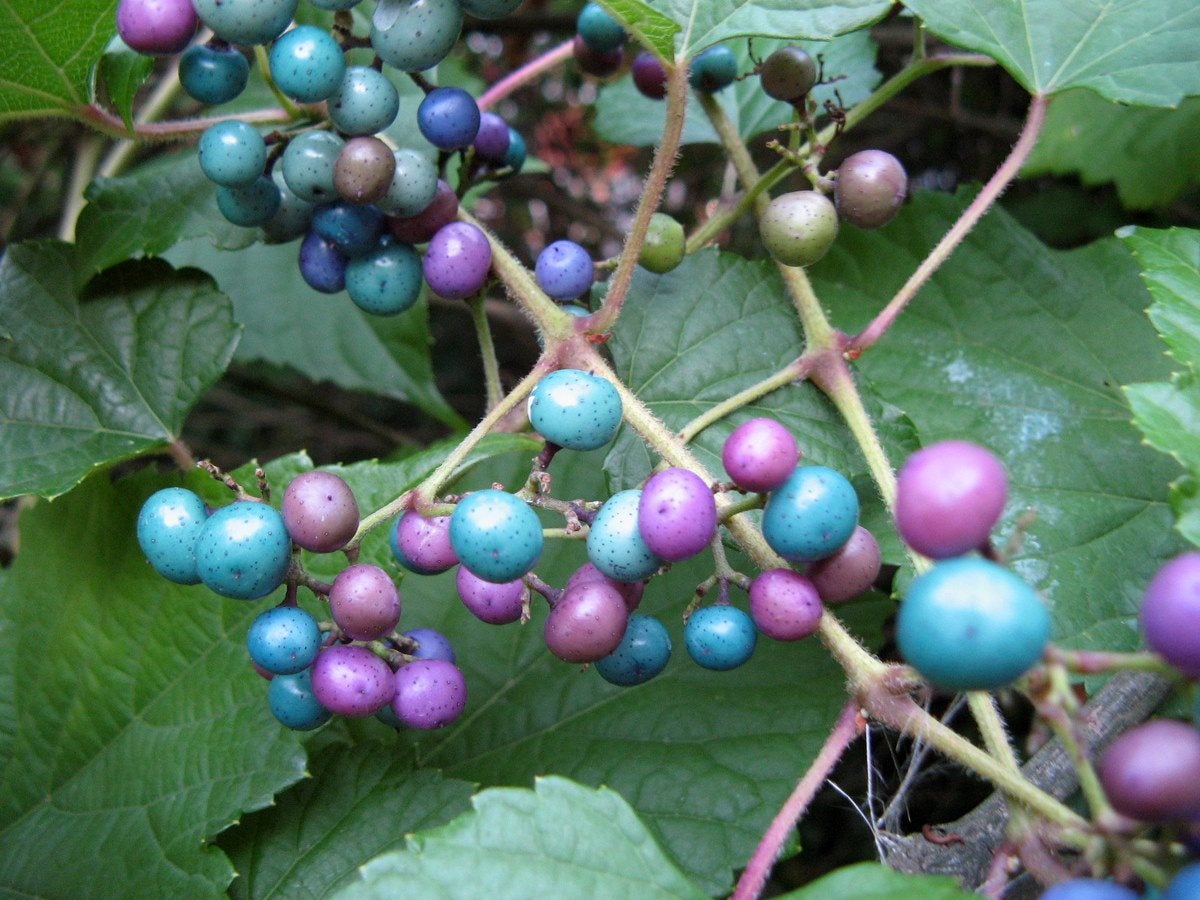The Porcelain Berry Vine: Learn How To Grow A Porcelain Vine


Porcelain vines are closely related to grapevines, and like grapes, they are grown more for their fruit than their flowers. This deciduous vine features dense, lush foliage from spring until fall. Rapidly growing porcelain vines provide quick cover for arbors and trellises. Also called a porcelain berry vine (Ampelopsis brevipedunculata), the plant produces clusters of interesting berries once in late summer and fall. The berries start out white, but gradually darken to shades of pink, lavender, turquoise, blue, and black as they age. Each cluster may have berries of several different colors. Birds and squirrels relish the berries, but people find them inedible.
How to Grow a Porcelain Vine
Porcelain vines are hardy in USDA plant hardiness zones 5 through 9. Plant porcelain vines in a location with full sun or partial shade. They prefer a moist, well-drained soil, but once established they tolerate drought. The vines climb by means of twining tendrils. Plant them near a sturdy supporting structure such as a fence, tree, trellis, or arbor. When choosing a supporting structure, keep in mind that the vine can grow 10 to 20 feet (3-6 m.) long and become quite heavy.
Porcelain Vine Care
Established porcelain vines can go for weeks without supplemental watering, but during prolonged dry spells it benefits from slow, deep watering. Prune the vine any time of year to control the growth. Remove wayward sections of the vine and stems that extend beyond the supporting structure. Porcelain vines tolerate hard pruning, and you can cut them nearly to the ground in late winter or early spring. When the vine grows against a tree, it's a good idea to cut it all the way back every few years to give the tree a chance to grow in diameter. Grow porcelain vines in the landscape with discretion. These prolific vines spread aggressively and reproduce rampantly from seeds. Control the vine's invasive tendencies in the garden through hard pruning and by removing seedlings. They easily escape into wild areas where they can crowd out native species. The 'Elegans' cultivar is not as invasive as others in the species, however. It features green leaves with attractive pink and white splotches. NOTE: Before planting anything in your garden, it is always important to check if a plant is invasive in your particular area. Your local extension office can help with this.
Gardening tips, videos, info and more delivered right to your inbox!
Sign up for the Gardening Know How newsletter today and receive a free copy of our e-book "How to Grow Delicious Tomatoes".

Jackie Carroll has written over 500 articles for Gardening Know How on a wide range of topics.
-
 Get Ready For A Summer Of Hummers! Grow These Full Sun Hummingbird Plants and Flowers
Get Ready For A Summer Of Hummers! Grow These Full Sun Hummingbird Plants and FlowersIf you’re lucky enough to enjoy a sunny backyard, make sure you are maxing out on your pollinator opportunities and grow these full sun hummingbird plants and flowers
By Tonya Barnett
-
 12 Lush Alternatives To A Lawn For Sustainable Spaces
12 Lush Alternatives To A Lawn For Sustainable SpacesAlternatives to a lawn are beautiful and also beneficial to your local ecosystem and its pollinators. Explore our top picks for plants to replace grass.
By Tonya Barnett